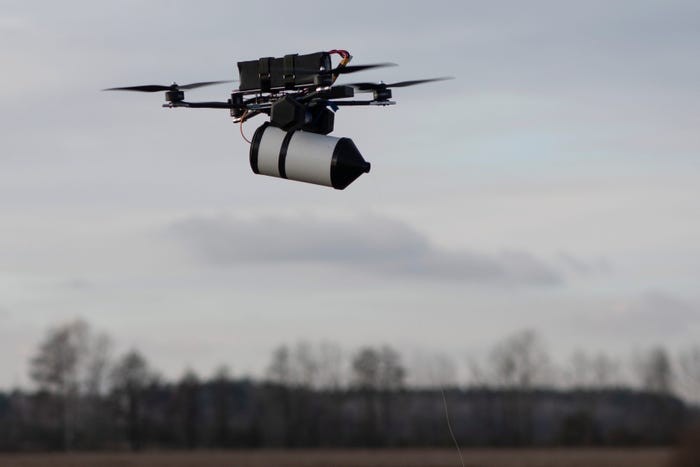
A new breed of explosive-laden drones connected by fiber-optic cables is emerging as a serious threat on Ukrainian battlefields, but an innovative detection system may soon help counter these dangerous weapons.
Russian forces have increasingly deployed these specialized first-person view (FPV) drones over the past year, creating major challenges for Ukrainian defenders. Unlike conventional drones that rely on radio signals, these are tethered by fiber-optic cables that make them immune to electronic jamming.
"We cannot detect and intercept them electronically," explains Yuriy, a major in Ukraine's National Guard electronic warfare unit. "If we can see them, we can fight them - but that's the problem."
American-Ukrainian technology company Kara Dag believes it has developed a solution. The company's system combines arrays of sensitive microphones with infrared laser technology to detect these stealthy drones up to a kilometer away from troop positions.
"These drones are highly dangerous because they can fly in tunnels, close to the ground, through valleys, and other areas where regular drones might lose connection," notes John, Kara Dag's Chief Technology Officer. "They transmit crystal-clear video without bandwidth limitations, allowing operators to see everything."
While the fiber-optic drones have limitations - they're slower than regular FPV drones and less maneuverable - their immunity to jamming makes them a persistent threat. They've been used successfully to destroy Ukrainian armored vehicles and scout defensive positions.
Kara Dag's detection system is currently undergoing laboratory testing and is scheduled for combat trials next month. The company aims to manufacture several thousand units monthly once testing is complete.
The arms race around drone technology continues to intensify. Ukraine's Digital Transformation Minister Mykhailo Fedorov describes it as a "cat-and-mouse game" where both sides constantly innovate to gain advantages.
Ukraine has also begun testing its own fiber-optic drones, with its military noting that these weapons are "becoming a big problem for the enemy on the front line." As both sides deploy more sophisticated unmanned systems, the technological battle shows no signs of slowing down.